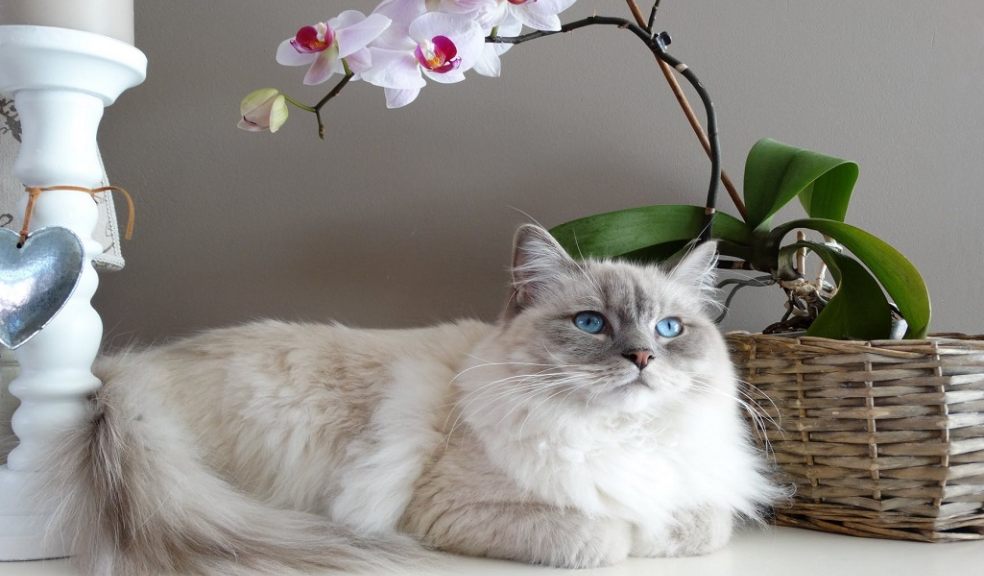
How Much Does it Cost to Own a Cat?
One of my favorite hobbies is hanging out with my two cats: Cookies and Ferry and I would like to discuss how much it costs to own a cat.
Adoption fees
I just wanted to go over what it means to own Dukat into financial commitments that come with owning two cats. So maybe you recently adopted a cat or you thinking about adopting a cat. Here's what you can expect.
And really, I'm going to break this down into three portions. The first portion is going to be the adoption fees. So with Cookies, we actually adopted him from my brother's friend. His friend's cat had a litter and Cookies was one of those. So we got Cookies that way.
And then with all of we actually adopted her from the shelter. So it'll give you two different perspectives. And then the next section will be doctor visits. And then after that, we'll just be miscellaneous or reoccurring costs.
So let's get into it. So the very first thing is the adoption fees with Cookies. We ended up, as I said before, we ended up getting him from my brother's friend. So he didn't have any of the shots. He didn't have any doctor's visits. He was neutered at that point. So we had to take him in to get all of this done.
So as you can tell, I'm going to put the bills up on the screen as well so you can follow along with the first bill that we got, the very first visit that we took him to to the Venner Hospital.
Vet bills
It cost us one hundred ninety-six dollars. And that was just for an exam and just it says fecal ova parasites because I think at that point he might have had parasites or his pupils like kind of stinking.
So they did like all these tests and stuff and just like normal vaccinations. And then the next three times we went, he was just going to get an exam and then also a vaccination.
So he had to get three or four different vaccinations. So he the next three exams was about sixty-nine dollars, including with the vaccination. So with this veterinary hospital, this is the first one that we went to.
It was actually forty-five dollars for an exam. But the new one that we're currently at there around sixty-nine dollars. So it will range, it can be from the forties to the 60s or 70s. So.
That and then the last visit that we took Cookies to this specific veterinary hospital, it was twenty-four dollars and it was for a rabies vaccination. So.
And then moving on to Ferry, actually, Ferry, when we adopted her, her name was Dolev, I mean, that name Dollar VI and she was already spayed and everything, like all of her shots and everything, was already up to date. So the rescue center took care of that. So it was a lot cheaper than Cookies.
And as you can tell by the screenshot, it was about 125 dollars.
One hundred twenty-five dollars included. Everything included everything from all our shots or rabies to Spader and everything like that.
So in grand total for Cookies is adoption, including everything was 4427.42 cents versus Ferry. When we adopted her from the rescue center it was one hundred and twenty-five dollars altogether.
So it's a lot cheaper to adopt it, adopt a cat from an adoption center and a lot of times you'll have adoption centers will have like a free weekend or if it's a holiday or something like that, like the specials, they'll have a zero adopt them for nothing so you can look out for those two. So moving on to hospital visits.
So hospital visits, the first hospital visit that we took them to, we had them both already at this time and we noticed that their poop was kind of smelling and it was more mainly Cookies and Ferry.
So we decided to take Cookies in. And this is a brand new veterinary hospital. So the prices are going to be a little bit different as well, as you can see. So we took Cookies in and the first. The session that we took in many was one hundred and eighty-two dollars in Tucson, so the exam itself was sixty-five bucks and since is like people thinking, they were thinking that he might have some sort of infection. So they added on some metro kind diesel tablets, so just antibiotic tablets to help his stomach as well.
So the next visit, which was three weeks later, was for $117.48.
So as you can tell, they gave us another batch of that medicine. But this time it was for.
Ferry, and because we were noticing that wafflers were getting better, but Ferry, now her poop was stinking because they share a litter box or we have two litter boxes and they share the two litter boxes. So now we were putting her on it as well. And it's just some random stuff. You know, the, ah, CVT feline PR. They were the doctors thinking that the.
The infection or whatever it was, the bug in their stomach was caused by their food, so they had special food.
So you can get a lot cheaper food at the grocery store and everything. But what speaking with are the veterinarians you saying, you know, depending on the cat, they might react to certain foods, a certain way, just the same way as humans have allergies. Some cats might do better with certain foods. So as you can see there, the feline PR, that's it was 70 bucks.
Special Diet
And that's just a special kind of diet that they're on. The pill pockets were because they weren't taking the pills. Because you're bitter, you have to chop them up and then put them in a little pill pocket, so.
And then the next time we went to this same veneering, it was actually for Ferry and Ferry has this.
Stuff on her chin, like little black things that come out and culture and like a scab, but we just thought it was acne and that actually was is a big headache.
We have to actually wash her chin twice a day because she has acne or actually we don't know really know what it is yet, even still to this day. So first day with acne and we kept going back for tests and test after test after test after test, as you will see in the next shot. So they gave us this shampoo because originally they thought it was Kadak knee.
So the shampoo, we just have to wash her twice and then also the exam and then Marrison ointment.
So it was meant for her chin and then also those tablets to help with that as well, to fight what they thought at that time was Kadak.
And then three months later. So we did that for a few months and it wasn't getting it was getting better at one point. But then we started only washing your chin about once a day instead of twice a day. And then it kind of came back. So we went back and then she was like, OK, it's not it's probably not cat acne. So they tested her for ringworm and they took that cytology for her ear and skin. And as you can see, that one was expensive, almost three hundred and sixty-three dollars and forty-three cents.
So them for them to test for like culture, they swapped her the stuff on the bottom of her chin and then ran tests on it. And it turns out it wasn't ringworm. So that was one hundred ninety bucks.
And they just did a bunch of other tests. And every time that you go, as you can see, the cortile exam or whatever, the exam is like sixty bucks. So no matter what you do, even if you go in and they do nothing, it's at least going to cost you 60 bucks. And then the next time we went in was two weeks later because you're ringworm test came back and it wasn't ringworm. So they did another culture test, which was two hundred and sixty-three dollars.
Right, and the RECHECK exam was fifty-five dollars, so. I mean, we're now we're just trying to figure it out, and at this point, they didn't even know what it was exactly, so they just kept running tests, kept running tests.
Two hundred and sixty-three dollars just run these tests. The next one that came back was about a week later after that, at this point, they are E40 Flora and Fauna Flora.
They were having got issues again, so their poop was kind of thinking more than usual. So the 40 flora is to help with their diet. Digestion is just like powder.
And then we put it on, put it on their food and the azithromycin liquid. So she was saying that she we're going to try that now to help with the skin culture. And actually, it's been a lot better.
Like her chin is way better now, but we still have to clean it twice a day and we still have to give her the liquid and then also the 40 flora.
So.
And yeah, there you go, that's where you have as far as office visits, Ferry has definitely been a little bit more expensive, actually a lot more expensive, but they kind of go hand in hand as well, because whatever you Cookies has, Ferry usually has and whatever all it has usually Cookies has as well, just because they share a little box to share their food and everything that so awful Cookies.
Office visits, one hundred and eighty-two oh two plus one seventeen eighty-four grand total of two hundred ninety-nine dollars and eighty-six cents for Cookies.
And then all of one fifty-eight plus three sixty-three three twenty-five-plus one eighteen plus the cents. Nine hundred and sixty-two dollars and eighty-five cents for all of.
And there you go, that's the office visits and we've had them only for about a year or so, we got them last March. We got Cookies at the end of March, and then we adopted All Live in May.
So we've had them for about a year, a little bit less than a year. Right.
So and then that's just the office visits and the adoption stuff. And you're not even getting into recurring costs. So recurring costs can be literally super expensive. And it depends on how far you're willing to go with it. I mean, you have your food. So for us, we give them special food and the special food is to help with their gut. And because we had other food before, but they didn't like it.
And then so we got to find a food that works but also doesn't mess up their stomach and that they'll actually eat. So the food that we get is sixty-one dollars per like a smaller bag. It's not even a huge bag. And then we have to get that every two to three months. I would say the cat litter the callar. We also need to get a special one because I've tried other ones and it didn't work and they just really like this one. So that's twenty-five bucks.
And that's also every about one and a half to two and a half months. And flea medicine, flea medicine costs fifty-eight. Ninety-eight for six. And you have to. So it's ten dollars for each free medicine application. So each time that you put flea medicine on them it's ten dollars which you should be giving it about once a month. And then also you just have miscellaneous things your cat treats your cattery. I mean on Amazon you don't have your category, but we have a cat tree and we're probably going to think about getting another one like the one we have is similar to this one, which is about sixty-four dollars on Amazon. And then you have treats and then you have toys and then you just have literally miscellaneous things.
So that's what you can expect if you own a cat or if you own cats, just know that, you know, it's not cheap.
Especially if you really want to, you know, take care of your cats for us, we're a little over the top. We're going to get the best things. We're going to get the treatment. I mean, for me, honestly, it's yeah, it sucks paying 300 bucks to get tests done, but it's, you know, peace of mind.
And there are insurance plans out there. We haven't gotten them, obviously. But, you know, if you're thinking about pet insurance, you know, that's a good way as well.














